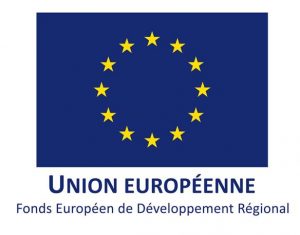| Name | PERSOONS Antoine antoine.persoons@inra.fr |
 |
| Team | Ecology of forest pathogenic fungi team | |
| Supervisors | S. De Mita / F. Halkett | |
| Subject | Genomic consequences of resistance 7 breakdown in poplar rust | |
| Period | 12/2018 – 09/2019 |
Monthly Archives: December 2018
New PhD student: Clémentine Louet
| Name | LOUET Clémentine clementine.louet@inra.fr |
 |
| Teams | Ecology of forest pathogenic fungi team & Ecogenomics of interactions team | |
| Supervisors | P. Frey / S. Duplessis | |
| Subject of thesis | Evolutionary and functional characterization of an avirulence locus in the poplar rust fungus | |
| Period | 12/2018 – 11/2021 |
Newcomer: Gang WU
| Name | WU Gang wugang@mail.kib.ac.cn |
 |
| Team | Ecogenomics of interactions | |
| Supervisor | F. Martin | |
| Subject | Evolution of the mycorrhizal lifestyle in Boletales and also mine the bolet genomes for cluster of genes involved in the synthesis of hallucinogenic compounds | |
| Type of visit | Associate professor at the Kunming Institute of Botany, Chinese Academy of Sciences | |
| Period | Dec. 2018/Dec. 2019 |
Descriptif général du projet FEDER ForBois 2
Programme FORBOIS2, Inrae, Université de Lorraine, AgroParisTech
Financement CPER
Porteur : Francis MARTIN, DR émérite INRAE
 |
  |
Newcomer: Pr. Pierre Leroy
| LEROY Pierre |  |
|
| Professor emeritus /Stress response and redox regulation team | ||
| pierre.leroy@univ-lorraine.fr |
PhD Defense: A. Maupetit
Agathe Maupetit soutiendra sa thèse, intitulée “Potentiel évolutif et déterminisme génétique de caractères d’agressivité et morphologiques de l’agent de la rouille du peuplier,Melampsora larici-populina“, le mardi 18 décembre à 9h dans la salle de conférences à l’Inra, devant le jury suivant :
Marie Foulongne-Oriol, Chargée de recherche, INRA Bordeaux, Rapporteure
Bruno Le Cam, Directeur de recherche, INRA Angers, Rapporteur
Chloé Delmas, Chargée de recherche, INRA Bordeaux, Examinatrice
Katherine Hayden, Chercheuse, RGBE Edimbourg, Examinatrice
Cécile Robin, Directrice de recherche, INRA Bordeaux, Examinatrice
Pascal Frey, Directeur de recherche, INRA Nancy, Directeur de thèse
Fabien Halkett, Chargé de recherche, INRA Nancy, Co-directeur de thèse, invité
Stéphane De Mita, Chargé de recherche, INRA Nancy, Co-directeur de thèse, invité
Agathe Maupetit will defend her PhD thesis, entitled “Evolutionary potential and genetic underpinnings of aggressiveness and morphological traits in the poplar rust fungus,Melampsora larici-populina“, on Tuesday, December 18 at 9:00 am in the conference room at INRA.
Résumé :Pour lutter contre les agents phytopathogènes, la sélection de plantes résistantes est la stratégie la plus rentable et la plus écologique. Les résistances quantitatives, basées sur des mécanismes de résistances complexes, sont connues pour être sujettes à l’érosion, en cas d’évolution de l’agressivité des agents pathogènes. L’objectif de ce travail basé sur le pathosystème peuplier – rouille du peuplier(Melampsora larici-populina) est d’évaluer le potentiel évolutif des caractères d’agressivité et morphologiques du parasite par des approches de génétique quantitative et d’identifier les bases génétiques par génétique d’association. Pour estimer la plasticité, l’héritabilité et les compromis évolutifs d’un ensemble de caractères quantitatifs, nous avons précisément mesuré leurs variations dans quatre populations contrastées du champignon. Nous avons montré que le volume des spores est un caractère héritable qui évolue rapidement. La quantité de mycélium in plantaest aussi héritable mais très conservée car sous sélection stabilisante dans les populations étudiées. Le temps de latence, la taille des lésions et le taux de sporulation présentent une héritabilité faible, ce qui explique l’absence d’évolution observées au cours du temps pour ces trois caractères. Les caractères liés à la fonction de sporulation semblent être les plus plastiques le long d’un gradient de maturité foliaire. L’ensemble de ces résultats suggère que la sporulation est la fonction la plus contrainte par l’environnement biotique et donc la meilleure cible pour la mise en place de résistances durables chez le peuplier. Si aucune base génétique de ces caractères quantitatifs n’a été mise en évidence, nous avons localisé un locus d’avirulence potentiel (Avr7) sur lequel une caractérisation fonctionnelle est envisagée.
Mots clés :Champignon phytopathogène, génétique quantitative, évolution, pouvoir pathogène, GWAS (étude d’association sur génome complet)
Abstract:To control plant pathogens, breeding resistant plants is the most cost-effective and ecological strategy. Quantitative resistances, which are based on complex plant mechanisms, are known to be exposed to erosion through an increase of pathogens aggressiveness. Through the study the poplar – poplar rust (Melampsora larici-populina) pathosystem, this work aims to estimate the evolutionary potential of aggressiveness and morphological traits using quantitative genetic approaches and to identify molecular bases through genome-wide association study. To estimate plasticity, heritability, and trade-offs for a set of quantitative traits, we precisely measured their variation in four contrasted pathogen populations. It appeared that spore volume is highly heritable and evolved rapidly. In plantamycelium quantity is also heritable but constant because of stabilizing selection occurring in the studied populations. Latent period, lesion size and sporulation rate exhibit low heritability, which explains the absence of evolution during the studied time period. Traits involved in the sporulating function seem to be the most plastic ones along a leaf maturity gradient. Altogether, these results suggest that sporulating function is the more constraint by the biotic environment and thus the best target for the construction of durable resistance in poplar. No genetic underpinning has been found for quantitative traits, but we have identified a potential avirulence locus (Avr7), opening the way for its functional characterization.
Key words:fungal plant pathogen, quantitative genetics, evolution, pathogenicity, GWAS (genome-wide association study)
Article: Microbial Ecology
Microbial Enzymatic Activities and Community-Level Physiological Profiles (CLPP) in Subsoil Layers Are Altered by Harvest Residue Management Practices in a Tropical Eucalyptus … F Maillard, V Leduc, C Bach, JL de Moraes Gonçalves, FD Androte, … Microbial Ecology, 1-6
Abstract
Harvest residue management is a key issue for the sustainability of Eucalyptus plantations established on poor soils. Soil microbial communities contribute to soil fertility by the decomposition of the organic matter (OM), but little is known about the effect of whole-tree harvesting (WTH) in comparison to stem only harvesting (SOH) on soil microbial functional diversity in Eucalyptus plantations. We studied the effects of harvest residue management (branches, leaves, bark) of Eucalyptus grandis trees on soil enzymatic activities and community-level physiological profiles in a Brazilian plantation. We measured soil microbial enzymatic activities involved in OM decomposition and we compared the community level physiological profiles (CLPP) of the soil microbes in WTH and SOH plots. WTH decreased enzyme activities and catabolic potential of the soil microbial community. Furthermore, these negative effects on soil functional diversity were mainly observed below the 0–5 cm layer (5–10 and 10–20 cm), suggesting that WTH can be harmful to the soil health in these plantations.
Article: New Phytologist
Phylogenomics of Endogonaceae and evolution of mycorrhizas within Mucoromycota. Y Chang, A Desiro, H Na, L Sandor, A Lipzen,…New Phytologist
Summary
Endogonales (Mucoromycotina), composed of Endogonaceae and Densosporaceae, is the only known non‐Dikarya order with ectomycorrhizal members. They also form mycorrhizal‐like association with some non‐Spermatophyte plants. It has been recently proposed that Endogonales were among the earliest mycorrhizal partners with land plants. It remains unknown whether Endogonales possess genomes with mycorrhizal‐lifestyle signatures and whether Endogonales originated around the same time as land plants did.
We sampled sporocarp tissue from four Endogonaceae collections and performed shotgun genome sequencing. After binning the metagenome data, we assembled and annotated the Endogonaceae genomes. We performed comparative analysis on plant‐cell‐wall‐degrading‐enzymes (PCWDEs) and small secreted proteins (SSPs). We inferred phylogenetic placement of Endogonaceae and estimated the ages of Endogonaceae and Endogonales with expanded taxon sampling.
Endogonaceae have large genomes with high repeat content, low diversity of PCWDEs, but without elevated SSP/secretome ratios. Dating analysis estimated that Endogonaceae originated in the Permian‐Triassic boundary and Endogonales originated in the mid‐late Silurian. Mycoplasma‐related endobacterium sequences were identified in three Endogonaceae genomes.
Endogonaceae genomes possess typical signatures of mycorrhizal lifestyle. The early origin of Endogonales suggests that the mycorrhizal association between Endogonales and plants might have played an important role during the colonization of land by plants.
Article: Biochimica et Biophysica Acta
The thioredoxin-mediated recycling of Arabidopsis thaliana GRXS16 relies on a conserved C-terminal cysteine F Zannini, A Moseler, R Bchini, T Dhalleine, AJ Meyer, N Rouhier, … Biochimica et Biophysica Acta (BBA)-General Subjects
Abstract
Background
Glutaredoxins (GRXs) are oxidoreductases involved in diverse cellular processes through their capacity to reduce glutathionylated proteins and/or to coordinate iron‑sulfur (FeS) clusters. Among class II GRXs, the plant-specific GRXS16 is a bimodular protein formed by an N-terminal endonuclease domain fused to a GRX domain containing a 158CGFS signature.
Methods
The biochemical properties (redox activity, sensitivity to oxidation, pKa of cysteine residues, midpoint redox potential) of Arabidopsis thaliana GRXS16 were investigated by coupling oxidative treatments to alkylation shift assays, activity measurements and mass spectrometry analyses.
Results
Activity measurements using redox-sensitive GFP2 (roGFP2) did not reveal any significant glutathione-dependent reductase activity of A. thaliana GRXS16 whereas it was able to catalyze its oxidation in the presence of glutathione disulfide. Accordingly, Arabidopsis GRXS16 reacted efficiently with oxidized forms of glutathione, leading to the formation of an intramolecular disulfide between Cys158 and the semi-conserved Cys215, which has a midpoint redox potential of – 298 mV at pH 7.0 and is reduced by plastidial thioredoxins (TRXs) but not GSH. By promoting the formation of this disulfide, Cys215 modulates GRXS16 oxidoreductase activity.
Conclusion
The reduction of AtGRXS16, which is mandatory for its oxidoreductase activity and the binding of FeS clusters, depends on light through the plastidial FTR/TRX system. Hence, disulfide formation may constitute a redox switch mechanism controlling GRXS16 function in response to day/night transition or oxidizing conditions.
General significance.
From the in vitro data obtained with roGFP2, one can postulate that GRXS16 would mediate protein glutathionylation/oxidation in plastids but not their deglutathionylation.
Article: Antioxidants and Redox signaling
Redox homeostasis in photosynthetic organisms: novel and established thiol-based molecular mechanisms. M Zaffagnini, S Fermani, CH Marchand, A Costa, F Sparla, N Rouhier, … Antioxidants and Redox Signaling
Abstract
Redox homeostasis consists of an intricate network in which reactive molecular species (RMS), redox modifications and redox proteins act in concert to allow both physiological responses and adaptation to stress conditions. This review highlights established and novel thiol-based regulatory pathways underlying the functional facets and significance of redox biology in photosynthetic organisms. This cannot be all-encompassing, but is intended to provide a comprehensive overview on the structural/molecular mechanisms governing the most relevant thiol switching modifications with emphasis on the large genetic and functional diversity of redox controllers (i.e. redoxins). We also summarize the different proteomic-based approaches aimed at investigating the dynamics of redox modifications and the recent evidence that extends the possibility to monitor the cellular redox state in vivo. Lastly, the physiological relevance of redox transitions is discussed based on reverse genetic studies confirming the importance of redox homeostasis in plant growth, development, and stress responses.
